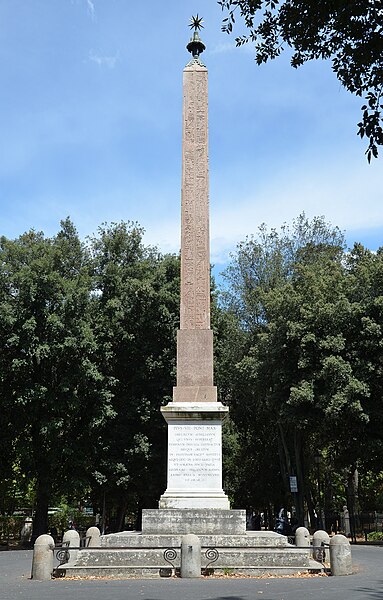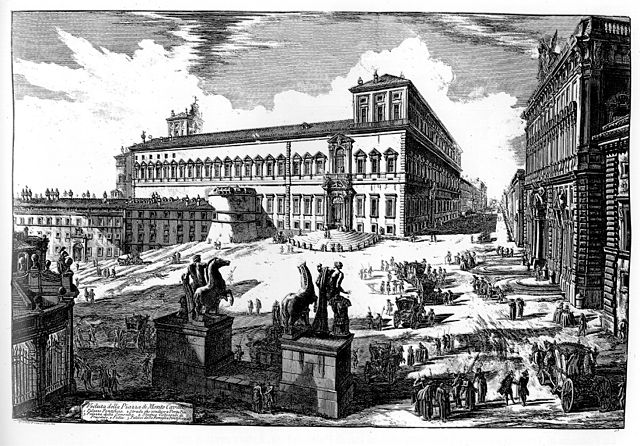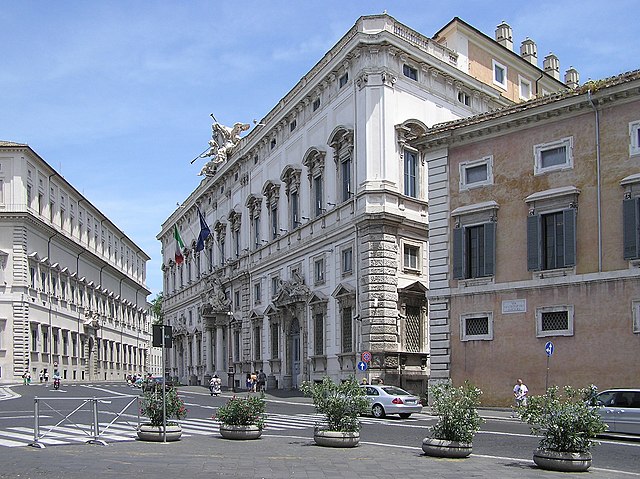The Pincian Hill is a hill in the northeast quadrant of the historical centre of Rome. The hill lies to the north of the Quirinal, overlooking the Campus Martius. It was outside the original boundaries of the ancient city of Rome, and was not one of the Seven hills of Rome, but it lies within the wall built by Roman Emperor Aurelian between 270 and 273.
Ascent of the Terrazza del Pincio from piazza del Popolo
The Pincian Obelisk
The Quirinal Hill is one of the Seven Hills of Rome, at the north-east of the city center. It is the location of the official residence of the Italian head of state, who resides in the Quirinal Palace; by metonymy "the Quirinal" has come to stand for the Italian president. The Quirinal Palace has an extension of 1.2 million sq ft (110,000 m2).
A mid-18th century etching of the Palazzo del Quirinale by Giovanni Battista Piranesi: The colossal Roman "Horse Tamers" or Dioscuri are in the foreground, but the obelisk from the Mausoleum of Augustus (erected 1781 – 1786) has not yet been set up between them.
An etching of the Hill, crowned by the mass of the Palazzo del Quirinale, from a series I Sette Colli di Roma antica e moderna published in 1827 by Luigi Rossini (1790–1857): His view, from the roof of the palazzo near the Trevi Fountain that now houses the Accademia di San Luca, substituted an imaginary foreground garden for the repetitious roofscape.
The Constitutional Court of Italy in Palazzo della Consulta, is among the Quirinal Hill government buildings in Rome.
Piazza del Quirinale






